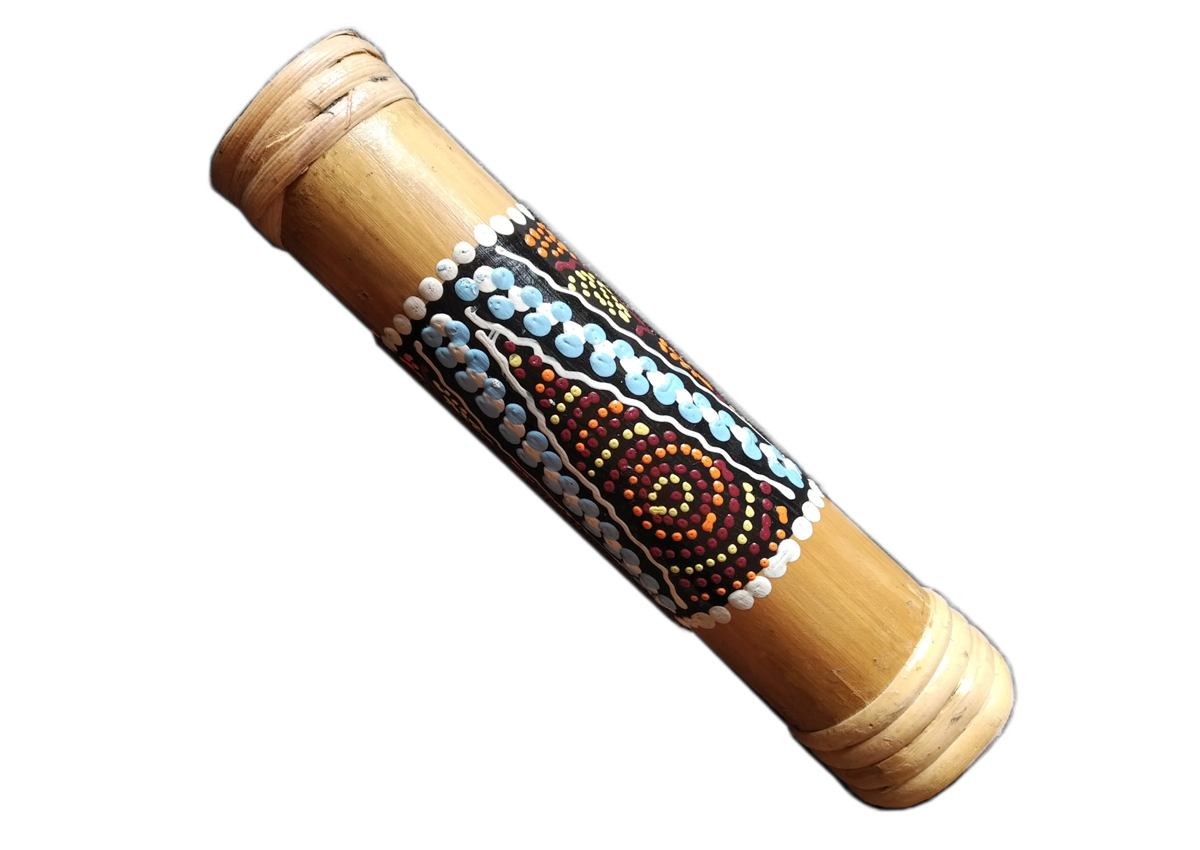A step by step guide to rainstick construction with a list of materials required.
Rainsticks are musical and ceremonial instruments used in ancient times. They were named after the soothing rain-like sound that these instruments produce. Traditionally, Rainsticks have been used in ceremonies to invoke and honor the “rain spirits”. They can also be fun toys for children to learn and explore with.
Use them to teach your children about the myths of times passed, or as part of a lesson on environmental issues. Parents and teachers alike will appreciate this simple design, and the teaching opportunities created by it. By following the instructions below, you and your children can construct one of your very own!
You will need the following supplies before you get started:
- Handsaw
- Wood Glue
- Scrap of ½ inch thick wood
- Drill w/long bit
- Sandpaper
- ½ Rounded File
- Kabob Skewers
- Bamboo – 1-3 feet long, 3 inches in diameter
1. Cut your piece of bamboo to the desired length, and hollow out the insides (you can use a long drill bit, or even a piece of metal rebar). Use your ½ rounded file to make it as smooth as possible.
2. Drill 2 rows of holes in the bamboo, roughly one inch apart. Be sure to use a drill bit the same diameter as your skewers.
3. Add some wood glue to the skewers and feed them through the bamboo. Allow to dry.
4. When the glue has dried, trim the ends of the skewers that stick out of either side of the bamboo.
5. Cut two pieces of wood to be used as plugs for either end of the bamboo. Glue one in place, and allow to dry.
6. Sand the areas where you trimmed the skewers, and stain or paint the bamboo (if desired).
7. Fill approximately 1/5 of the length of bamboo with your filler of choice (rice, beans, rocks, gravel, seeds, etc.). Experiment with different amounts and materials, as different fillers will produce different sounds. Be sure to cover the end when testing!
8. When you are pleased with the sound of your rainstick, glue the other piece of wood into the open end and allow to dry.
May the Gods smile upon you!!
The Author:
Amy Morgan first fell in love with Bamboo in high school. Now she works as a freelance writer for http://www.thebamboosite.com – a site that offers information about bamboo flooring.
Photo. AniaPM
